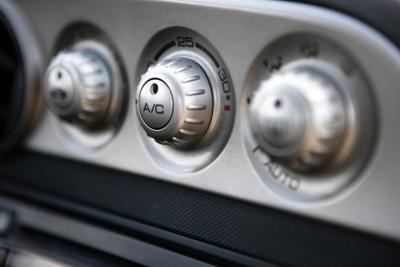
The A/C compressor in the 1998 LeSabre helps keep the full-size luxury vehicle cool by pushing refrigerant throughout the A/C system. Unfortunately, the compressor is prone to failure due to age or a lack of lubricating oil within the compressor. In such cases, it is prudent to replace the compressor with a new unit that is capable of keeping the LeSabre cool during the summer months.
Have the R-134a refrigerant removed from the LeSabre's A/C system by a trained service technician before starting work. Most repair shops have the expertise and the equipment to safely reclaim and store the refrigerant from the vehicle. Do not release refrigerant into the air.
Park the LeSabre on a flat, level surface. Open the hood and disconnect the negative terminal cable from the battery.
Locate the belt routing diagram near the front of the vehicle. If the diagram is not available, refer to the owner's manual for the proper belt routing procedure. Place a socket wrench with a breaker bar on the belt tensioner on the passenger side of the engine and move it counterclockwise to relieve tension from the belt. Slide the belt off the tensioner and the other remaining pulleys. Slowly move the tensioner back into position.
Loosen the wheel lugs on the front passenger side wheel with a lug wrench. Raise the front of the vehicle with a floor jack and secure the vehicle with jack stands. Finish removing the wheel lugs and dismount the wheel from the hub.
Pry away the plastic pins with a slotted screwdriver to remove the plastic wheel well splash guard. Unbolt the bottom plastic cover underneath the front end of the vehicle with a socket wrench.
Follow the A/C system plumbing toward the rear of the compressor. Remove the bolt holding the plumbing to the compressor and move it out of the way. Locate the electrical harness near the compressor clutch and unplug it. Loosen the three bolts holding the compressor to its bracket with the socket wrench.
Remove the bolts while holding the compressor in place and carefully guide it out of the vehicle. Drain the compressor of oil by holding the rear of the compressor over a measuring container while rotating the clutch by hand in the direction of rotation during normal operation.
Observe how much of the old oil you drained in the measuring container. Pour the same amount of fresh compressor oil into another measuring container. Add that amount of oil into the compressor through the compressor's intake port at the rear while turning the clutch in the direction of rotation during normal operation.
Mount the new compressor to the bracket and insert the three retaining bolts while holding the compressor in place. Tighten the bolts with the socket wrench.
Reinstall the plumbing to the rear of the compressor and reinsert the retaining bolt that holds it in place. Tighten the bolt with the socket wrench.
Reattach the plastic splash guard to the wheel well. Reattach the bottom plastic cover to the front of the vehicle. Mount the wheel onto the hub and hand-tighten the wheel lugs. Remove the jack stands and lower the vehicle to the ground. Torque the wheel lugs to 100 foot-pounds with a torque wrench.
Route the belt around the pulleys according to the belt routing diagram. Move the tensioner counter-clockwise and slip the belt onto the tensioner. Slowly move the tensioner back into position.
Make sure the belt is lined up properly on all of the pulleys. Reconnect the negative terminal cable to the battery and close the hood.
Have a trained service technician purge the A/C system of trapped air and add both additional compressor oil and R-134a refrigerant. Discard the old compressor oil in an environmentally friendly manner.